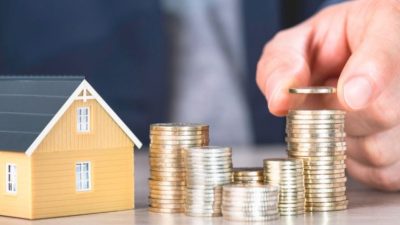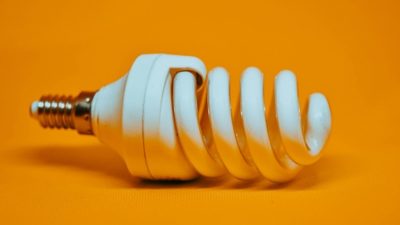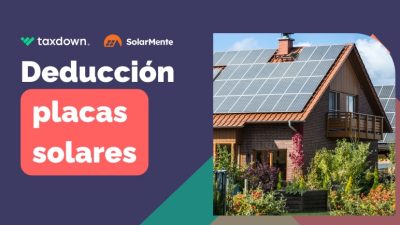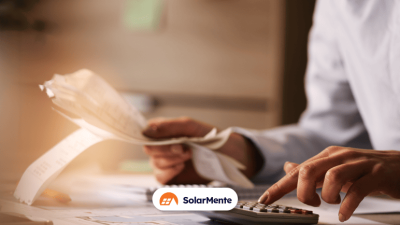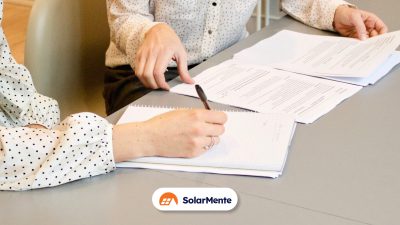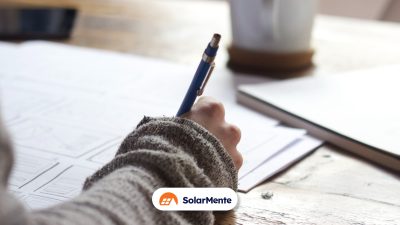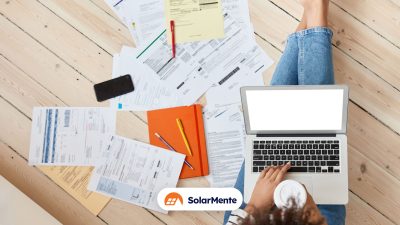The Climate Change and Energy Transition Law was approved on 21 May 2021 in the Official State Gazette (BOE) to take an important step towards the renewable energy sector in Spain and ensure the objectives set out in the Paris Agreement approved in 2015.
The new energy transition and climate change plan aims to neutralise greenhouse gas emissions in Spanish territory before reaching 2050, promoting, for the first time, the achievement of SDG 13.
It also aims to establish a sustainable and efficient energy system to facilitate a just transition.
In this article, we will go into detail about the energy transition and the measures taken to combat climate change.
What is the energy transition?
It is a set of changes in the energy generation process that contribute to decarbonisation, where power plants are replaced by procedures that prioritise the use of renewable sources with low pollution emissions.
But we are not only talking about reducing dependence on fossil fuels, but also about making a rational and sustainable use of resources, as well as changing consumption habits in society.
To get to this point, Spain will receive aid from the European fund that will enable the creation of some 350,000 jobs in
green energy.
Main measures to curb climate change
Here are the main objectives set for 2030 with the aim of slowing down the rapid growth of climate change:
- A reduction of at least 23% in greenhouse gas emissions compared to 1990.
- At least 74% of the electricity system’s production comes from renewable sources.
- Primary energy consumption is minimised by at least 39.5% compared to the baseline established in Community legislation.
- Consumption from renewable energy sources is at least 42%. At present, it represents 20%.
What the Climate Change and Energy Transition Law in Spain will be like
The main objective of the Climate Change and Energy Transition Law is decarbonisation, but it also establishes other key ideas that focus on achieving a sustainable model in the economy.
These are some of the measures the Government is working on to reduce the emission of polluting gases:
1. Improving energy efficiency and refurbishing buildings.
According to this regulation, the use of
renewable energies in buildings will be encouraged and facilitated.
If you are thinking of buying a new home in the city, the Housing Rehabilitation and Urban Renewal Plan will provide incentives for self-consumption, photovoltaic installations in residents’ associations and zero-emission cooling and heating, thanks to the European funds allocated to carry out the required adaptations.
2. Promoting the use of electric vehicles and sustainable mobility
In cities, it is increasingly common to see areas with restricted access to high-polluting cars. This has encouraged the purchase of electric vehicles and to move around the urban territory with the total certainty that they are not polluting the environment.
What does the new law propose? The installation of new car charging points and promoting investment in the sector for its continued development.
Remember: the
solar energy produced by your photovoltaic system can recharge your car batteries in a matter of hours. From SolarMente, we can help you with the installation of electric car chargers in your home in order to achieve maximum convenience and avoid unnecessary trips to public areas for charging.
With this measure, the aim is to create a fleet of cars and commercial vehicles without CO2 emissions by 2050, gradually reducing emissions until they end in 2040.
At the same time, municipalities with more than 50,000 inhabitants plus island territories will have to adopt sustainable urban mobility plans by 2023.
3. Pollution reduction
The regulation places emphasis on reducing the use of fossil fuels and promoting the consumption of renewable fuels such as biogas, hydrogen or biomethane that allow the reuse of organic waste.
Likewise, this objective aims at not authorising the exploitation of hydrocarbons, nor granting research permits or exploitation activities. Nor new authorisations involving the use of hydrofracturing or
fracking.
4. New tax reforms
A committee of experts will be put in charge of improving accessibility to the use of renewable energy for both individuals and companies by introducing new tax credits to encourage self-consumption and minimise dependence on polluting gases for electricity generation.
At present, owners of solar installations can enjoy deductions in the payment of IBI and ICIO in accordance with their autonomous community.
5. Greater access to information
Among the new initiatives included in the regulation, one of them is to give greater power to the consumer through the introduction of a reform within one year that will allow users to participate in the energy market, access their data and invest in distributed generation.
What will the solar energy transition look like in the short term?
Within two years: “500,000 solar roofs” and European funds.
The Minister for Ecological Transition, Teresa Ribera, took advantage of her speech at the UNEF Solar Forum to specify two of her key objectives for self-consumption: “at least 500,000 solar roofs and at least 1,200 local energy communities within two years”. Photovoltaics, which is a service, an industry and much more, is key to the energy transition, the minister stressed.
Highlighting the importance of including this sector within the funds of the post-pandemic recovery plan, the government has allocated 900 million euros for subsidies for self-consumption and storage projects, which makes this a great opportunity for those who want to opt for more sustainable energy, benefiting from these subsidies.
Moreover, in view of the rise in electricity prices, self-consumption is a very interesting option.
At the European level, it is also worth mentioning that the EU has proposed a VAT rate of between 0 and 5% for solar panels for residential use and in public buildings in order to accelerate the energy transition and reduce CO2 emissions. Therefore, Spain will be able to reduce -if it wishes- the VAT on photovoltaic modules for residential self-consumption and in public buildings.
What will the solar energy transition look like in the medium term?
Between now and 2030: Spain on the road to decarbonisation.
The National Integrated Energy and Climate Plan (PNIEC) 2021-2030 aims to reduce greenhouse gas (GHG) emissions by 23% compared to 1990. But how to reach this target?
In the context of the PNIEC, the potential for self-consumption penetration in Spain has been analysed. Based on the potential analyses carried out, the Self-consumption Roadmap – December 2021 of the Ministry for Ecological Transition and the Demographic Challenge and published by the Institute for Energy Diversification and Saving (IDAE) – sets a target to reach 9 GW of installed capacity in 2030 with the implementation of the measures described therein.
This target could increase to 14 GW of installed self-consumption in 2030 in the event of a very favourable scenario of high penetration.
In Catalonia, as the Director General for Energy of the Generalitat de Catalunya, Assumpta Farran, points out, the challenge is to achieve 3.5 GW of ground-mounted PV and 2.1 GW of roof-mountedPV by 2030 (as it will not be possible to achieve this only with roofs).
What will the solar energy transition look like in the long term?
By 2050: European Green Pact
The average annual PV installation projected by the International Energy Agency (IEA) during the decade 2020-2030 worldwide is between 120 GW per year in the announced policy scenario, 230 GW per year in the sustainable development scenario and 303 GW per year in the scenario of full decarbonisation by 2050.
Also, according to findings of the International Renewable Energy Agency (IRENA), which can be found in The Future of Solar PV, (2019), the global installed capacity of solar PV would increase six-fold by 2030 (2.840 GW) and would reach 8,519 GW in 2050.
As seen in the projections, there is a pattern of rapid growth in the coming years, so solar is on track to drive a clean and renewable Europe and help achieve the European Green Deal by 2050.
The importance of the energy transition
The new measures taken by the government, which will come into force on 22 May, will go a long way towards achieving climate change targets. However, there are effects that cannot be reversed and it will be necessary to take action to mitigate them in the shortest possible time.
Leaving aside the conventional electricity grid and opting for
photovoltaic self-consumption will not only bring benefits for our planet, but you will also obtain significant savings in your domestic economy. To do so,
try our solar calculator and find out how much your monthly electricity bill will be reduced.







